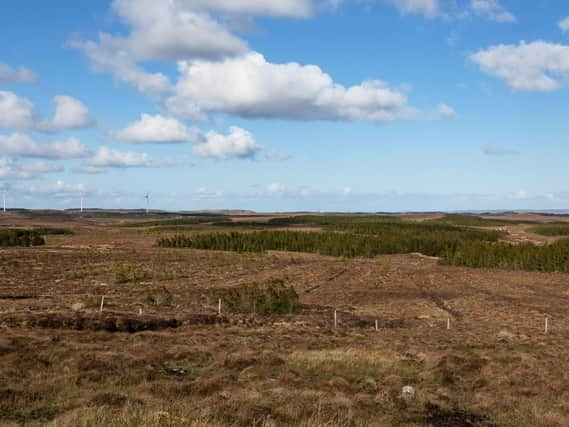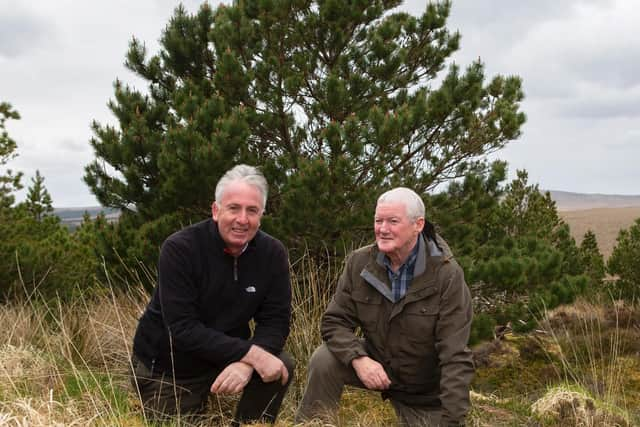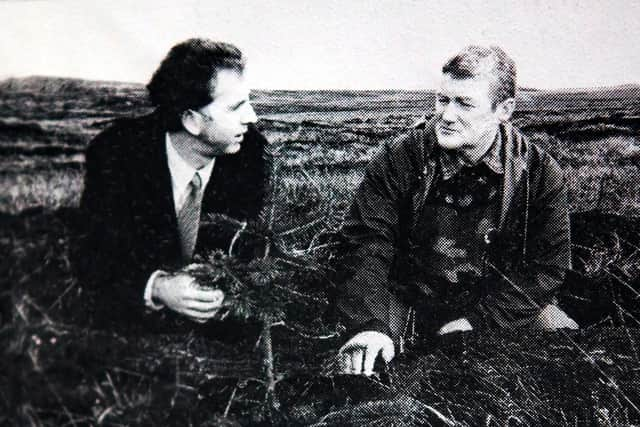How Highland crofters took on the wealthy and transformed their fortunes by trees


This week, crofters from across the Highlands will gather to mark the impact of the Crofter Forestry Act of 1991.
The law came at a time when only the wealthy were planting trees in the Highlands with investors buying up vast tracts of forestry in a bid to gain tax relief on their income.
Advertisement
Hide AdAdvertisement
Hide AdFamously, the late broadcaster Terry Wogan was among celebrities twho invested in tree planting in the Flow Country, a vast expanse of wetland and peatland in Caithness and Sutherland, as part of a scheme which came under fire for reducing habitats for several bird species.


While celebrities were aiming to earn tens of thousands out of their forestry investment, crofters were still forbidden from diversifying from traditional activities of grazing animals and cutting peat.
The Crofter Forestry Act changed all that.
Calum MacDonald, former Western Isles MP who put first put forward a Private Member's Bill to gain the first extension of crofters rights over their grazings since the 1880s, said: “Prior to this, the rights of crofters over their grazings were just what they had been for 100 years, namely grazing your animals and cutting peat.
"But in the 1980s there was a revival of interest and a change in the image of crofting.


“Whereas in the 1960s and 70s policy makers and Governments had viewed it as an archaic and inefficient type of agriculture, the newly-established Crofters Union began articulating a modern vision of crofting as ideally suited to delivering environmental and social benefits in a responsible and sustainable way.
“The problem was that the rights of crofters were still stuck in the 19th Century and they were unable to take advantage of new economic and environmental opportunities such as the widely-recognised need to plant more trees.
"The only people able to plant trees in the Highlands were multi-millionaires.
“There was a particularly infamous example involving showbiz stars like Terry Wogan planting vast hectares in the Flow Country in Caithness while the crofting communities got nothing at all.
Advertisement
Hide AdAdvertisement
Hide Ad“The Act changed all that. It gave crofters both ownership of, and funding for, trees on their common grazings. Communities all over the Highlands took advantage of it and it gave a big boost to the community woodland movement generally across the whole of Scotland.”
Duncan Mackay was clerk to the Sandwick North Street township in Lewis which was one of the first to take advantage of the new Act. He said the scheme had a "transformational effect" on crofting community finances as well as on their physical surroundings.
He said: “Before the Crofter Forestry Act came along we were struggling to raise £70 for fertiliser for the grazings. Every place was struggling then, because if you wanted to do improvements, you had to go round begging for money.”
With the passage of the Crofter Forestry Act, common grazings committee could receive £5,000 a year for 15 years in compensation for planting 100 hectares or 190,000 trees.
He said: “Within a few years we were affluent and were able to do lots of improvements.”
Having that money meant the grazings committee were always able to find their share of the costs of improvements that were needed – for the fank, fencing, reseeding or drainage – and also had some money for village amenity improvements such as flower baskets and to give to the over-65s and any villagers needing to pay for travel to competitions or events.
“It was absolutely fantastic. It transformed the whole place and at the end of the 15-year period we had £28,000 sitting in the bank, in a high-interest account.”
Mr Mackay said the Act was a game changer and praised Mr MacDonald for bringing it in.
Advertisement
Hide AdAdvertisement
Hide Ad“We never looked back once that came in. It absolutely changed grazings and agriculture. It changed the whole concept.”
The forestry meant the land “looks far better and was generating money as well”.
Bill Ritchie, one of the Assynt crofters who led the historic buyout of the Sutherland estate in 1993, will speak at the Croft Woodland conference, which runs tomorrow (Thursday) and Friday, to highlight the impact of the legislation.
The conference has been organised by The Woodland Trust and Scottish Forestry, the new name for the Forestry Commission.
Mr Ritchie estimated that more than 10 million trees were planted throughout the crofting counties under the scheme and said it was “a wonderful gift to give to the next generation”.
He said: “It will be for the next generation to decide what to do with these woodlands. We’ve given a very valuable resource to the next generation. When I was doing this 25 years ago, I was a young whippersnapper crofter. Now my grandson is out planting trees.
“They say the best time to plant a tree is 25 years ago. The next best time is now. And that’s why I love the fact my grandson is out there, planting trees now.
“It takes a long time to establish a woodland so we need to do it now, for the next generation. It’s all very well to say, ‘what use is that to us?’ It might not be of use to you but it’s of use to the next generation.”
Advertisement
Hide AdAdvertisement
Hide AdMr MacDonald, who now develops community wind farms including Point and Sandwick Trust’s award-winning Beinn Ghrideag, agreed.
He said that the success of the forestry scheme showed that crofters should be afforded more rights to diversify their income.
“Although the first 25 year of crofter forestry has been hugely successful, we need to see it as only a start of what needs to be done, especially with the Climate Change Committee now saying we need another 3 billion trees planted by 2050. And it’s not just trees.
“Why shouldn’t crofters have the right to harvest wind energy as well peat? Why not the right to plant wind turbines as well as trees?
“I was also part of the Scottish Office team that brought in Devolution in 1999 and if there is one thing I find really disappointing it is the lack of further progress on crofting rights and progress. We have half a million hectares in crofting tenure and 5,000 communities organised into grazings committees yet successive Governments still see this as an embarrassing anachronism instead of a unique Scottish strength that should be central to land use policy in the 21st Century.”